In the ever-evolving automotive landscape, two contenders have emerged as popular choices among consumers: the Ford Puma and the Toyota Corolla. Despite their differences in body style and engineering philosophy, both vehicles deliver impressive performance and innovative features. In this article, we will compare the Ford Puma, a sleek compact SUV, with the Toyota Corolla, a reliable hatchback, exploring their technical specifications and innovative aspects.
Ford Puma vs Toyota Corolla – Which car suits you better?
Everyday use, family trips or long-distance drives – here’s where the differences show.
Discover whether Ford Puma or Toyota Corolla fits your lifestyle better.
Design and Body Type
The Ford Puma is designed as a compact SUV, offering a raised stance that provides better visibility and a sense of authority on the road. Its sporty silhouette is accentuated by sharp lines and a modern grille, appealing to buyers who prefer a stylish yet practical vehicle. The Puma measures 4186 mm in length, 1805 mm in width, and stands at a height of 1550 mm, making it a versatile choice for both city driving and outdoor adventures.
On the other hand, the Toyota Corolla stands as a classic hatchback, embodying a more traditional design ethos. With its length of 4370 mm, width of 1790 mm, and a height of 1435 mm, the Corolla delivers a compact footprint that's perfect for urban environments. The hatchback layout emphasizes practicality, offering ample cargo space while retaining a sporty look.
Engine and Performance
When it comes to engines, the Ford Puma offers a range of options, including petrol mild-hybrid (MHEV) and electric variants. The Puma is equipped with a 1.0L three-cylinder engine that produces power outputs ranging from 125 HP to 168 HP, depending on the configuration. Fuel consumption variants stand at approximately 5.4 to 6.0 L/100 km, while the electric range reaches up to 376 km, showcasing its versatility for both petrol and electric drivers.
In contrast, the Toyota Corolla employs a highly efficient full hybrid system, featuring either a 1.8L or 2.0L four-cylinder engine delivering between 140 HP and 196 HP. With consumption as low as 4.4 L/100 km and CO2 emissions of just 100 g/km, the Corolla stands out for its eco-friendly approach. Acceleration times are competitive, reaching 0 to 100 km/h in as little as 7.5 seconds.
Driving Experience and Handling
Ford’s Puma is designed with an emphasis on fun-to-drive characteristics. Its front-wheel-drive setup, combined with responsive steering and agile handling, makes it an engaging choice for drivers who appreciate a sporty ride. The available dual-clutch automatic transmission enhances performance, ensuring smooth gear transitions regardless of the conditions.
On the other hand, the Corolla has built its reputation on reliability and ride comfort. The adaptation of a Continuously Variable Transmission (CVT) contributes to a seamless driving experience, although some may argue it lacks the engagement found in traditional gearboxes. The Corolla’s emphasis on comfort and stability over sportiness makes it an excellent commuter vehicle.
Interior and Technological Innovativeness
Inside the Ford Puma, the cabin is characterized by a modern aesthetic with high-quality materials and an intuitive infotainment system. The vehicle is equipped with Ford’s latest SYNC 3 technology, enabling smartphone integration and advanced connectivity options. Additionally, a notable feature is the available 456 to 523 liters of trunk space, making it highly practical for families or road trips.
The Toyota Corolla, while simpler in its design, doesn’t sacrifice quality. It integrates Toyota’s latest multimedia system, offering compatibility with Apple CarPlay and Android Auto. The Corolla features a well-structured interior with comfortable seating and a cargo space ranging from 313 to 361 liters. Although more straightforward, the Corolla’s tech remains user-friendly and practical.
Safety and Reliability
Both vehicles are equipped with robust safety features. The Ford Puma comes with a suite of advanced driver-assistance systems (ADAS), including adaptive cruise control and lane-keeping assist, contributing to its high safety ratings. Ford's reputation for reliability is also supported by a variety of warranties and service plans tailored to customers’ needs.
Similarly, the Toyota Corolla is renowned for its safety prowess, earning high ratings in crash tests and incorporating Toyota Safety Sense technology as standard. This includes pre-collision systems, adaptive cruise control, and lane departure alerts, positioning it as a safe choice for drivers concerned about safety.
Conclusion
In the showdown between the Ford Puma and Toyota Corolla, both vehicles shine in their respective categories. The Puma appeals to those seeking a versatile and sporty compact SUV with a good blend of petrol and electric options. Meanwhile, the Corolla stands as a environmentally-conscious choice that emphasizes efficiency, reliability, and comfort.
Ultimately, the decision comes down to personal preference: whether you desire the sporty ride of the Puma or the eco-friendly reliability of the Corolla, you can’t go wrong with either choice.
Here’s where it gets real: The technical differences in detail
Costs and Efficiency:
Price and efficiency are key factors when choosing a car – and this is often where the real differences emerge.
Ford Puma has a to a small extent advantage in terms of price – it starts at 24800 £, while the Toyota Corolla costs 28600 £. That’s a price difference of around 3806 £.
Fuel consumption also shows a difference: Toyota Corolla manages with 4.40 L and is therefore distinct more efficient than the Ford Puma with 5.40 L. The difference is about 1 L per 100 km.
Engine and Performance:
Power, torque and acceleration are the classic benchmarks for car enthusiasts – and here, some clear differences start to show.
When it comes to engine power, the Toyota Corolla has a slight edge – offering 178 HP compared to 168 HP. That’s roughly 10 HP more horsepower.
In acceleration from 0 to 100 km/h, the Ford Puma is slight quicker – completing the sprint in 7.40 s, while the Toyota Corolla takes 7.50 s. That’s about 0.10 s faster.
In terms of top speed, the Ford Puma performs a bit better – reaching 210 km/h, while the Toyota Corolla tops out at 180 km/h. The difference is around 30 km/h.
Space and Everyday Use:
Cabin size, boot volume and payload all play a role in everyday practicality. Here, comfort and flexibility make the difference.
Both vehicles offer seating for 5 people.
In curb weight, Ford Puma is slight lighter – 1316 kg compared to 1420 kg. The difference is around 104 kg.
In terms of boot space, the Ford Puma offers clearly perceptible more room – 523 L compared to 361 L. That’s a difference of about 162 L.
In maximum load capacity, the Ford Puma performs to a small extent better – up to 1283 L, which is about 231 L more than the Toyota Corolla.
When it comes to payload, Ford Puma slight takes the win – 469 kg compared to 450 kg. That’s a difference of about 19 kg.
Who wins the race?
The Toyota Corolla proves to be only a minor advantage and therefore becomes our DriveDuel Champion!
Toyota Corolla is the better all-rounder in this comparison.
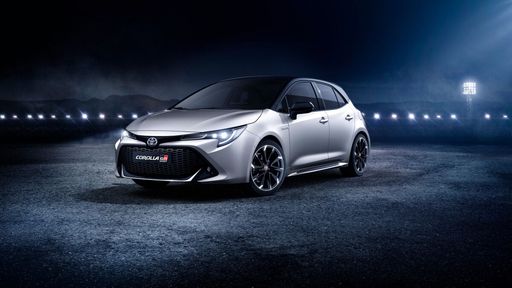 @ Toyota Motor Corporation
@ Toyota Motor Corporation
Toyota Corolla
Ford Puma
The Ford Puma is a cheeky compact crossover that blends sporty styling with city-friendly practicality, giving drivers a surprisingly fun and composed ride. With clever storage tricks and a lively personality, it’s a smart pick for buyers who want enjoyment without fuss.
details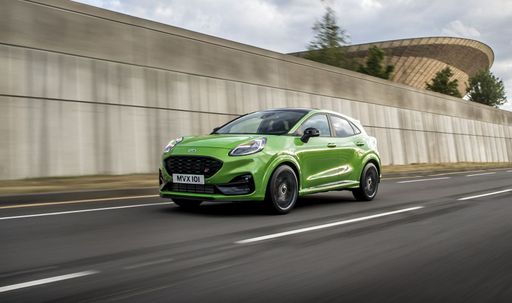 @ Ford Motor Company / Ford Media Center
@ Ford Motor Company / Ford Media Center
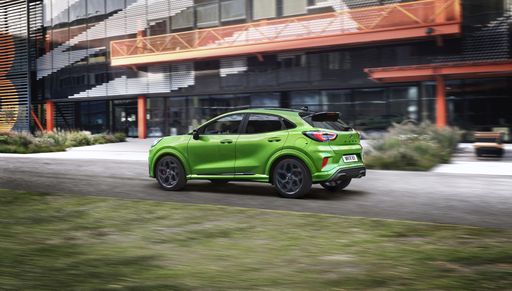 @ Ford Motor Company / Ford Media Center
@ Ford Motor Company / Ford Media Center
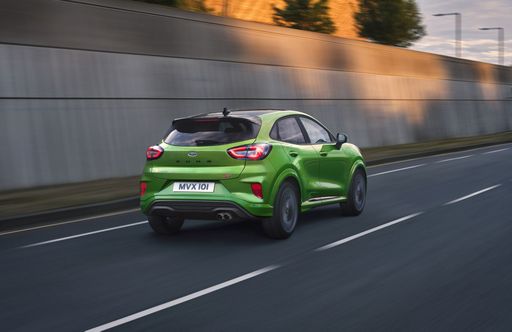 @ Ford Motor Company / Ford Media Center
@ Ford Motor Company / Ford Media Center
 @ Ford Motor Company / Ford Media Center
@ Ford Motor Company / Ford Media Center
Toyota Corolla
The Toyota Corolla remains the steady, no-nonsense compact that puts reliability and low running costs at the top of your shopping list, with a comfortable, well-built interior that won't embarrass you at the supermarket. It won't set your pulse racing, but it's an honest, easy-to-live-with car that makes smart sense for buyers who want dependability and sensible value with a dash of modern tech.
details @ Toyota Motor Corporation
@ Toyota Motor Corporation
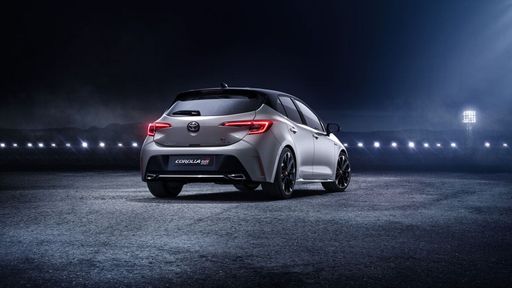 @ Toyota Motor Corporation
@ Toyota Motor Corporation
 @ Toyota Motor Corporation
@ Toyota Motor Corporation
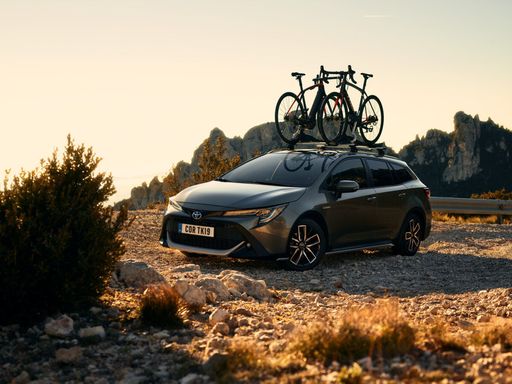 @ Toyota Motor Corporation
@ Toyota Motor Corporation
 @ Toyota Motor Corporation
@ Toyota Motor Corporation
 @ Ford Motor Company / Ford Media Center
@ Ford Motor Company / Ford Media Center
|
 @ Toyota Motor Corporation
@ Toyota Motor Corporation
|
|
|
|
Costs and Consumption |
|
|---|---|
|
Price
24800 - 36300 £
|
Price
28600 - 34900 £
|
|
Consumption L/100km
5.4 - 5.9 L
|
Consumption L/100km
4.40 L
|
|
Consumption kWh/100km
13.1 - 13.9 kWh
|
Consumption kWh/100km
-
|
|
Electric Range
361 - 376 km
|
Electric Range
-
|
|
Battery Capacity
43 kWh
|
Battery Capacity
-
|
|
co2
0 - 135 g/km
|
co2
100 g/km
|
|
Fuel tank capacity
42 L
|
Fuel tank capacity
43 L
|
Dimensions and Body |
|
|---|---|
|
Body Type
SUV
|
Body Type
Hatchback
|
|
Seats
5
|
Seats
5
|
|
Doors
5
|
Doors
5
|
|
Curb weight
1316 - 1563 kg
|
Curb weight
1420 - 1460 kg
|
|
Trunk capacity
456 - 523 L
|
Trunk capacity
313 - 361 L
|
|
Length
4186 - 4226 mm
|
Length
4370 mm
|
|
Width
1805 mm
|
Width
1790 mm
|
|
Height
1550 - 1555 mm
|
Height
1435 mm
|
|
Max trunk capacity
1216 - 1283 L
|
Max trunk capacity
1004 - 1052 L
|
|
Payload
367 - 469 kg
|
Payload
400 - 450 kg
|
Engine and Performance |
|
|---|---|
|
Engine Type
Electric, Petrol MHEV
|
Engine Type
Full Hybrid
|
|
Transmission
Automatic, Manuel
|
Transmission
Automatic
|
|
Transmission Detail
Reduction Gearbox, Manual Gearbox, Dual-Clutch Automatic
|
Transmission Detail
CVT
|
|
Drive Type
Front-Wheel Drive
|
Drive Type
Front-Wheel Drive
|
|
Power HP
125 - 168 HP
|
Power HP
140 - 178 HP
|
|
Acceleration 0-100km/h
7.4 - 9.8 s
|
Acceleration 0-100km/h
7.5 - 9.2 s
|
|
Max Speed
160 - 210 km/h
|
Max Speed
180 km/h
|
|
Torque
170 - 290 Nm
|
Torque
-
|
|
Number of Cylinders
3
|
Number of Cylinders
4
|
|
Power kW
92 - 124 kW
|
Power kW
103 - 131 kW
|
|
Engine capacity
999 cm3
|
Engine capacity
1798 - 1987 cm3
|
General |
|
|---|---|
|
Model Year
2025
|
Model Year
2025
|
|
CO2 Efficiency Class
A, D
|
CO2 Efficiency Class
C
|
|
Brand
Ford
|
Brand
Toyota
|
Is the Ford Puma offered with different drivetrains?
The Ford Puma is offered with Front-Wheel Drive.
The prices and data displayed are estimates based on German list prices and may vary by country. This information is not legally binding.
